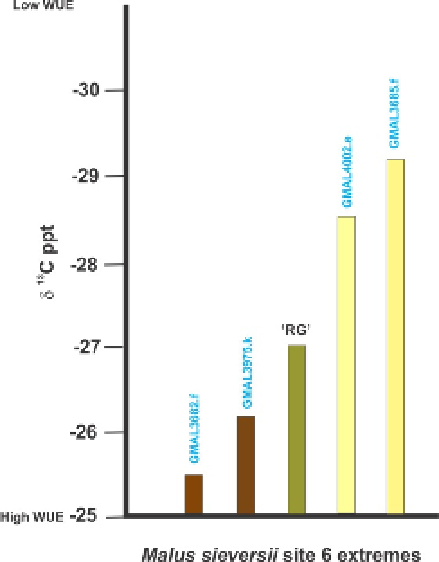Agriculture Reference
In-Depth Information
Figure 6.
Stable carbon isotope analysis of select
M. sieversii
individuals from the site 6 population Measurements
were made from branches representing current year's growth. Collection of samples was made from dormant trees
for three years and averaged. RG: 'Royal Gala' standard.
In other words, although leaf and stomate physical characteristics might contribute to the
drought response of
M. sieversii
individuals from site 6, another mechanism(s) appears to better
explain the WUE data.
Further Research
: The overall goal of this project is to link drought responsiveness and/or
WUE to specific apple genes. To this end we are interested in candidate genes that are either
up-regulated in response to drought (drought 'defensive' genes) or down-regulated (drought
survival 'assisting' genes). The latter can be used to identify genetic alterations that could
hamper the physiological state attained by up-regulated genes and therefore to be avoided in
breeding programs. Up-regulated genes are of interest because of their obvious association
with drought resistance. We have developed primers for many of the drought up-regulated
genes identified in 'Royal Gala' and have tested them against individual lines of
M. sieversii
.
Experiments to quantify their expression in the roots, bark and leaves of the site 6 lines
representing WUE extremes are currently underway. We are also replicating additional
M.
sieversii
lines on their own roots for simulated drought experiments like the ones shown in
Figure 7 to provide physiological, morphological and molecular biological data to detect
associations to drought resistance or susceptibility. Since the
M. sieversii
site 6 and 9 popula‐
tions have undergone rapid adaptation to the xerophytic environments they currently occupy,
it seems likely that alterations in patterns of expression could account for their survival. To

Search WWH ::

Custom Search